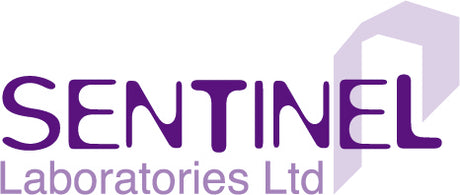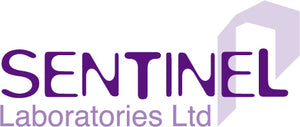Buying Guide for Protective Gloves (PPE)
Guide to Buying Protective Gloves in the UK
When purchasing protective gloves in the UK, it's essential to understand the regulations and standards that govern their design, manufacturing, and performance. This guide provides an overview of key regulations, standards, and categories, along with explanations for each.Protective gloves play a crucial role in safeguarding workers and ensuring their safety in various industries. In the United Kingdom, purchasing protective gloves involves compliance with specific regulations and adherence to relevant standards to ensure product quality and safety. This guide will provide an overview of the regulations and standards you should consider when buying protective gloves in the UK, along with explanations of each.
Health and Safety at Work Act 1974:
The Health and Safety at Work Act 1974 is the primary legislation governing health and safety in the UK workplace.It places a duty on employers to ensure the health, safety, and welfare of their employees and others affected by their work activities.
When purchasing protective gloves, employers should consider the Act's requirements to provide suitable personal protective equipment (PPE) to employees.
Personal Protective Equipment (PPE) Regulations 2002:
The PPE Regulations 2002 implement European Directive 89/686/EEC on personal protective equipment in the UK.These regulations set out the essential health and safety requirements for PPE, including protective gloves.
When buying protective gloves, ensure they meet the PPE Regulations' requirements for design, construction, and testing.
CE Marking:
In the UK, protective gloves should bear the CE marking, which signifies compliance with relevant European Union directives.The CE mark indicates that the gloves meet essential health and safety requirements and have been tested accordingly.
EN Standards:
European standards for protective gloves are established under the EN (European Norm) system.Common EN standards related to protective gloves include:
EN 388: Protective gloves against mechanical risks.
EN 374: Protective gloves against chemicals and microorganisms.
EN 407: Protective gloves against thermal risks (heat and fire).
EN 511: Protective gloves against cold.
These standards define testing methods and performance requirements for specific types of gloves. Ensure that gloves meet the relevant EN standards for your intended use.
Risk Assessment:
Conduct a risk assessment to identify the specific hazards and risks your workers face.Choose protective gloves that are suitable for the identified risks and provide the necessary level of protection.
The risk assessment should align with the hierarchy of controls, with PPE (including gloves) as a last resort after other control measures have been considered.
Supplier Compliance:
When purchasing protective gloves, work with reputable suppliers who can provide certification and documentation confirming compliance with regulations and standards.Ensure that the gloves come with user instructions and information on their intended use and limitations.
User Training:
Proper training on the selection, use, and care of protective gloves is essential.Train employees on how to inspect, put on, remove, and dispose of gloves safely.
Emphasize the importance of regular glove inspection and replacement when necessary.
Record Keeping:
Maintain records of glove purchases, inspections, and user training to demonstrate compliance with regulations.
By following these guidelines and ensuring compliance with UK regulations and EN standards, you can make informed decisions when purchasing protective gloves to protect the health and safety of your workers in the United Kingdom. Always consult with relevant authorities or safety experts for specific industry and workplace requirements.
Regulations and Standards for Protective Gloves
1. Categories of Protective Gloves
Protective gloves are categorized into three levels, based on their intended use and associated risks:
Category I: These gloves are for minimal risks and include tasks such as cleaning or gardening.
Category II: Gloves in this category provide protection against medium risks, such as handling chemicals.
Category III: Gloves in this category are designed to protect against irreversible or mortal risks, such as working with corrosive chemicals or biological hazards.
2. EN388: Protective Gloves Against Mechanical Risks
EN388 is a standard that assesses gloves' resistance to mechanical risks, including abrasion, cut resistance, tear resistance, and puncture resistance. Gloves are rated using a four-digit code (e.g., 4543), with higher numbers indicating better performance.
The first digit represents abrasion resistance.
The second digit indicates cut resistance.
The third digit denotes tear resistance.
The fourth digit represents puncture resistance.
3. EN420: General Requirements for Protective Gloves
EN420 outlines the general requirements for protective gloves. It covers aspects like sizing, labeling, and information provided by the manufacturer. Gloves must meet these requirements to ensure user comfort and safety.
4. EN374: Protective Gloves Against Chemicals and Micro-organisms
EN374 evaluates gloves designed to protect against chemical and micro-organism hazards. It includes various tests to assess resistance to permeation, degradation, and penetration by hazardous substances.
5. EN407: Protective Gloves Against Thermal Risks
EN407 evaluates gloves intended to protect against thermal hazards, such as heat and fire. It measures resistance to flammability, contact heat, convective heat, radiant heat, small splashes of molten metal, and large splashes of molten metal.
6. EN511: Protective Gloves Against Cold
EN511 is applicable for gloves designed to protect against cold conditions. It assesses resistance to convective cold, contact cold, and water penetration.
7. EN421: Protective Gloves Against Ionizing Radiation and Radioactive Contamination
EN421 specifies requirements for gloves intended for protection against ionizing radiation and radioactive contamination.
8. EN1149-1: Protective Gloves Against Electrostatic Risks
EN1149-1 outlines the requirements for gloves designed to protect against electrostatic hazards. It measures electrical resistance and charge decay properties.
9. Directive 2002/72/EC: Materials and Articles Intended to Come into Contact with Food
This directive regulates gloves intended for use with food. It sets out requirements for materials and substances used in gloves to ensure they are safe for contact with food.
10. AQL (Acceptable Quality Level)
AQL is a critical concept in glove manufacturing. It represents the maximum number of defective items acceptable in a batch of gloves. A lower AQL indicates higher quality. For example, an AQL of 0.65 means that 65 out of 1000 gloves can be defective.
Why AQL is Important
AQL is crucial because it ensures that the gloves you purchase meet quality standards. Low AQL values indicate a commitment to quality control, which is essential when selecting gloves to protect against various risks.
Why We Are Better Able to Supply These Gloves
Sentinel Laboratories Ltd is better positioned to supply protective gloves in the UK for several reasons:Expertise: We have a team of experts knowledgeable about UK regulations and international standards for protective gloves, ensuring that our products comply with all relevant requirements.
Product Range: We offer a wide range of gloves that cover various categories and standards, ensuring that you can find the right gloves for your specific needs.
Quality Assurance: Our commitment to supplying the highest Quality PPE means you can trust the quality of our gloves to protect against the risks you face. As an Independent Supplier we will offer you the gloves most suited to your task.
Customer Support: We provide excellent customer support to assist you in selecting the most suitable gloves and answering any questions you may have.
Custom Solutions: We can work with you to develop custom glove solutions tailored to your unique requirements, ensuring maximum safety and comfort.
When it comes to purchasing protective gloves in the UK, Sentinel Laboratories Ltd stands out as a reliable and knowledgeable supplier committed to safety and quality.
Please note that regulations and standards may change over time, so it's essential to stay updated and consult with experts in the field for the latest information and recommendations.

